Amazing Photos: Polar Bear Expedition in Svalbard, Norway
Polar Bear on the Ice
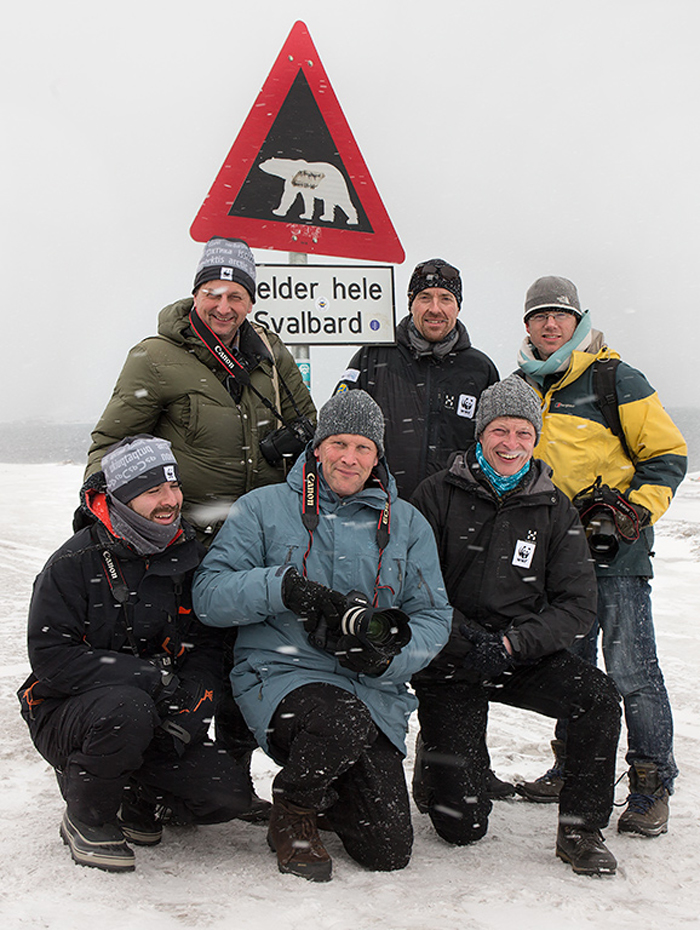
In April, World Wildlife Fund (WWF), the Norwegian Polar Institute (NPI) and Canon photographers spent nearly two weeks on a research expedition to the islands of Arctic Norway. A former U.S. Coast Guard icebreaker ship served as their research vessel. Through aerial surveys and on-the-ground fieldwork, the team searched for polar bears on the ice and any females emerging from denning sites. The team collected biological samples as well, to learn more about the how the bears are doing. They also paid close attention to the sea-ice conditions, as sea ice is critical habitat for bears and their primary prey, seals. The following photos reveal the stunning scenery and realities of fieldwork in the harsh Arctic environment, and some of the initial findings from the expedition. [ Polar Bear Monitoring More Crucial as Ice Dwindles (Op-Ed)]
Pancake Ice Near Monaco Glacier
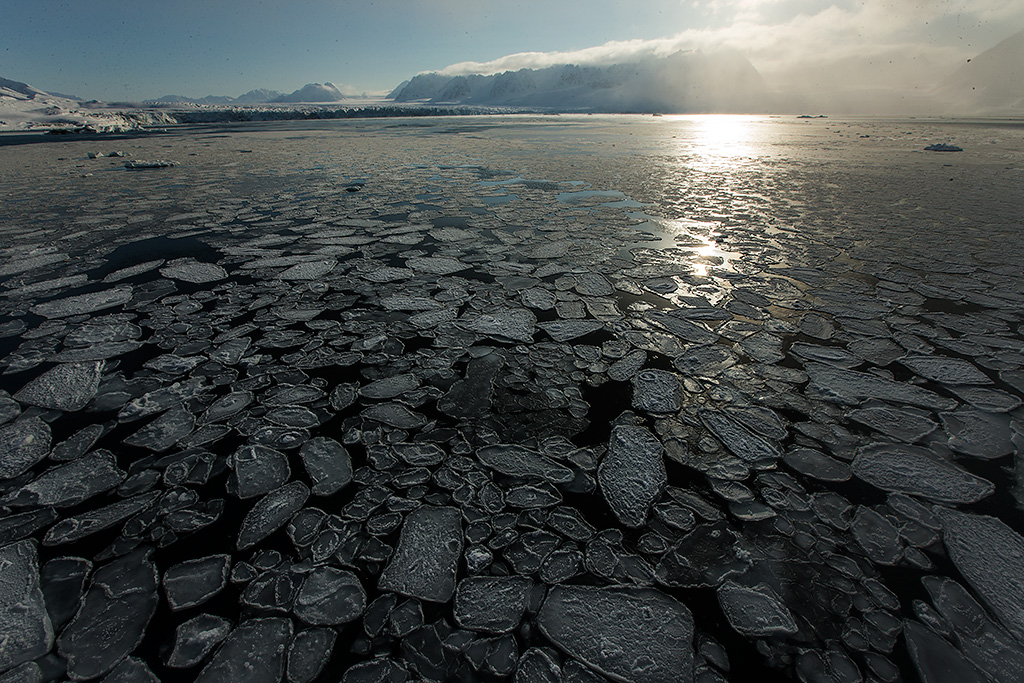
Chunks of sea ice — called pancake ice — litter the waters near Monaco glacier. During the sea-ice formation process, these chunks of ice would normally join together to eventually form ice sheets. Water temperatures, however, are not cold enough to allow ice to grow thick and solid, even though air temps are well below zero. The team was surprised by how little sea ice there was in the waters around Svalbard. Sea ice extent and thickness has changed a lot over the last couple decades, with more and more areas completely ice-free all the time. For one researcher, this was the least amount of ice he’d seen in the past eleven years.
Breaking the Ice
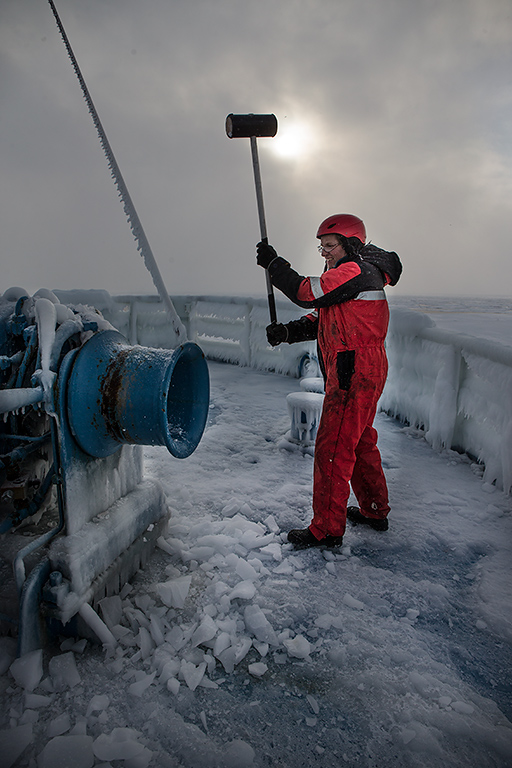
A member of the Svalbard expedition uses a rubber sledge hammer to knock off ice that is blanketing the icebreaker research vessel, the Lance. Such ship-keeping comes with the territory, this high in the Arctic. Frozen seawater covered every exposed surface in the frigid air. The researchers and crew had to wear helmets while on deck to protect themselves from falling icicles.
polar bear tagging expedition
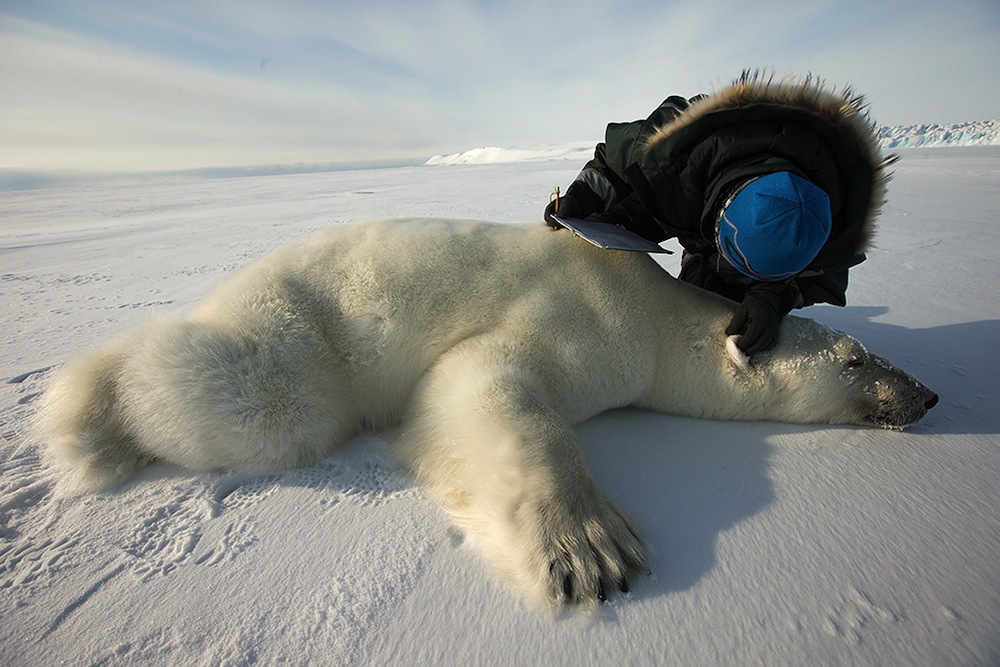
A researcher fits a sedated polar bear with an ear tag. The Norwegian Polar Institute is pioneering work using geo-location ear tags that may help determine when bears go into dens. The dime-sized device records and stores a surprising amount of information on location, outside temperature and the amount of light. Such tags are one example of the exciting new technology being used in wildlife research.
Svalbard Research Team in Helicopter
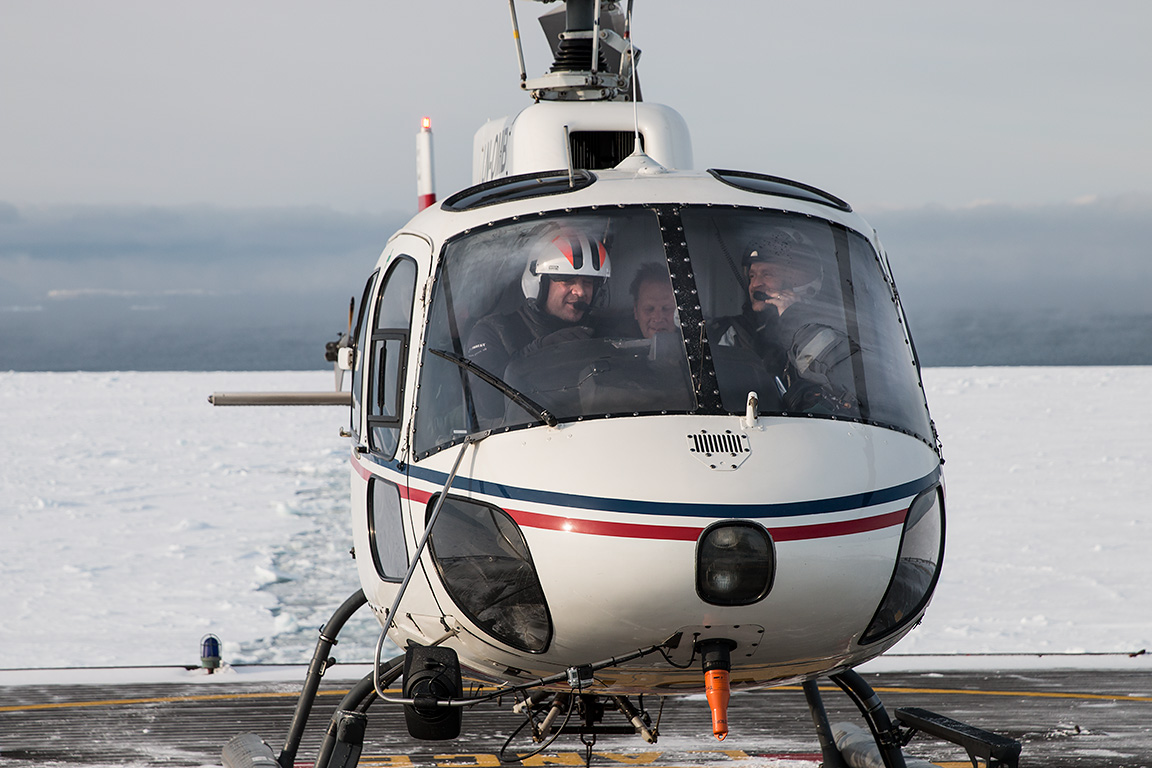
The Svalbard research team heads out in a helicopter to conduct aerial surveys. The helicopter went out every day, as weather permitted, in search of bears on sea ice — where the team could find it, as there was far less this year than on previous surveys. The researchers were also looking for places where females were coming out of dens and trying to find family groups. If able, the team tried to capture the bears to assess their health, measure their size and fit them with satellite collars. Only females receive collars, as collars slip off the smaller necks of males and cubs. During the ten-day research cruise, there were not many females observed with cubs or yearlings, which is concerning. Sea ice is critical habitat for polar bears and their primary prey, ringed seals, and the lack of sea ice is already negatively impacting seal reproduction.
Polar Bear Prints
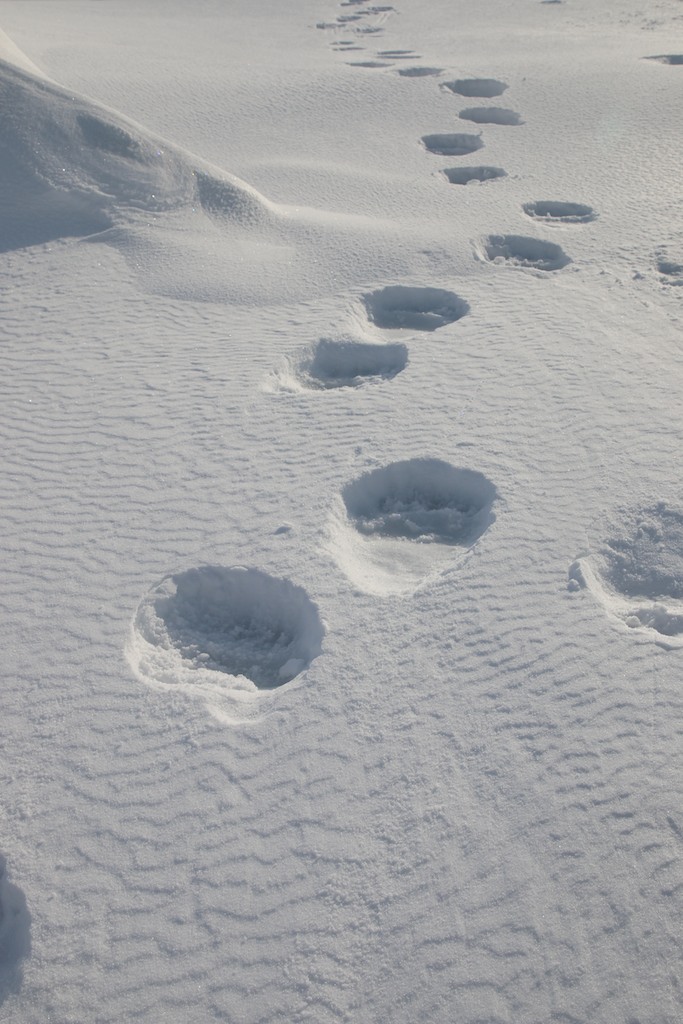
The crew found a trail of polar bear prints near where the ship was stationed. Samples of snow from the prints were collected to test out an innovative new genetic technique — collecting usable DNA from where polar bears have tread. This is being piloted in Norway and in the United States, in collaboration with a French genetics lab that has shown this is possible with other species. If it works, this technique has promising implications for research in more remote parts of the Arctic, where there is a lack of basic information on bears and lack of capacity for monitoring.
Ice on the Deck of the Lance
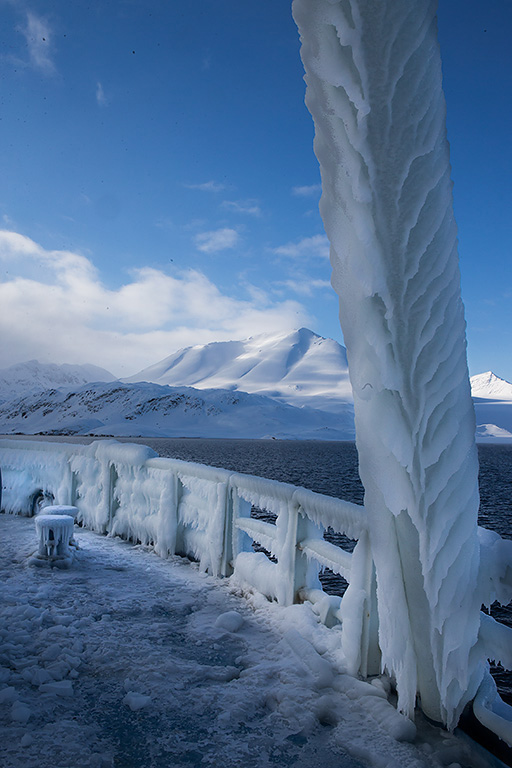
A clear sunny day reveals Svalbard’s spectacular rugged mountains covered in snow and the gentle glaciers which reach all the way to the sea. Frozen seawater covers all of the exposed surfaces of the Lance giving it a haunting look. The night before had been a rough one at sea, with water splashing over the ship as it crashed down between the waves.
Get the world’s most fascinating discoveries delivered straight to your inbox.
A Polar Bear Paw
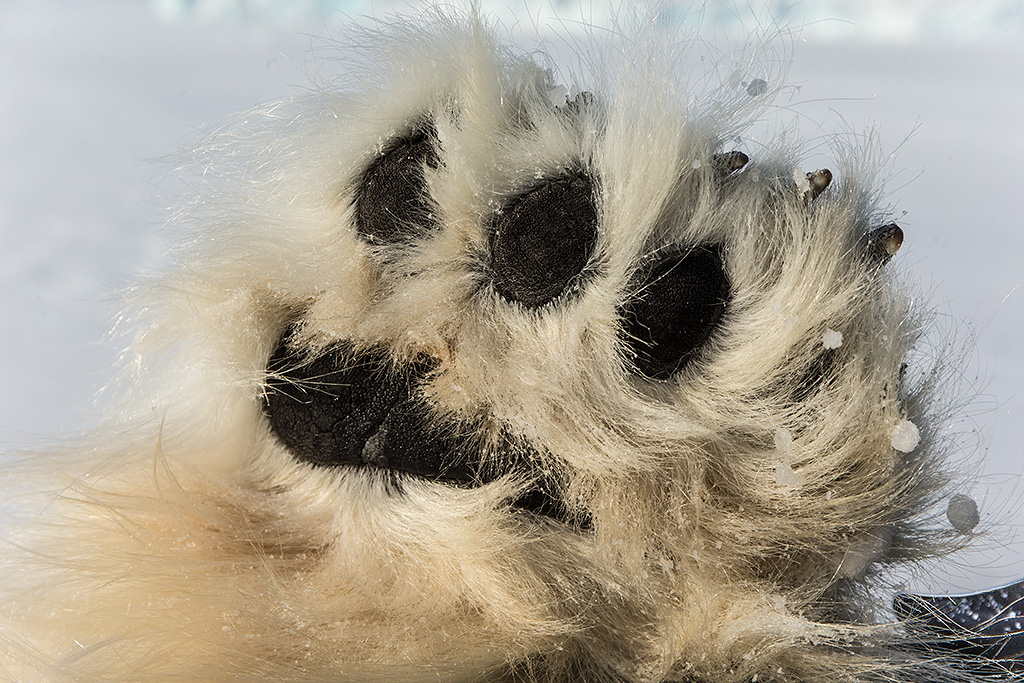
While humans rely on ice picks to navigate glaciers, polar bears are naturally equipped. Each nearly 12-inch paw has five sharp and strong claws, which are also perfectly designed for catching and holding seals. The paws are also very broad, and this helps the bear spread out more of its weight on thin sea ice to avoid breaking through.
Weighing a Polar Bear
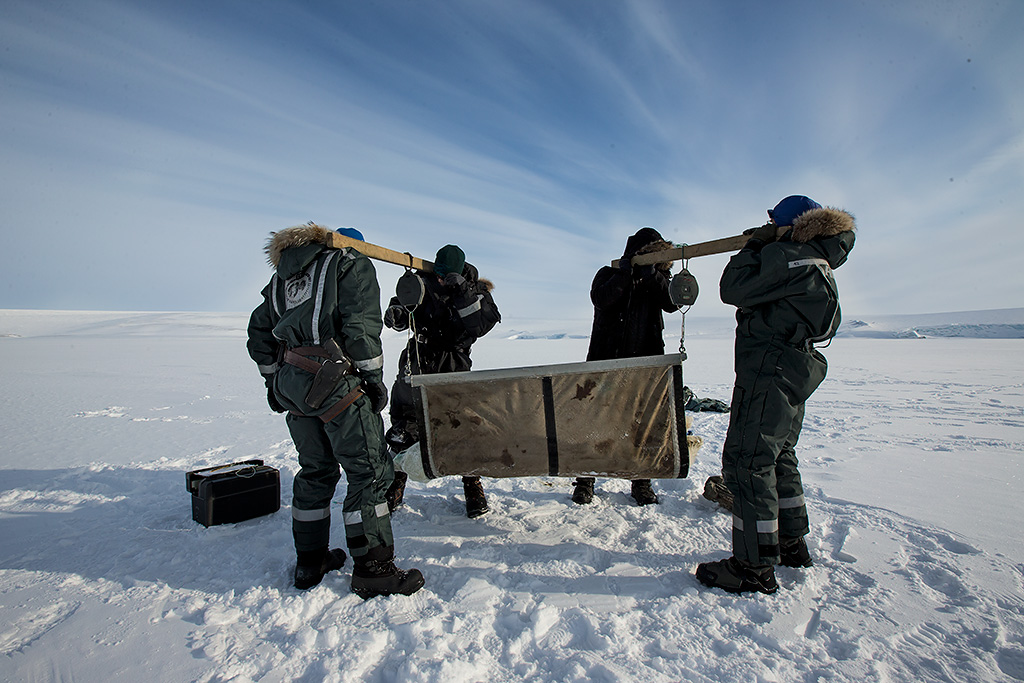
Balancing a field scale on their shoulders, researchers weigh a sedated polar bear cradled in a sling. Bears can weigh between 350 pounds and 1,200 pounds, with males being larger than females. The team also measures bear length and estimate's each animal's age. They also collect samples of blood, fat, hair and other tissues. These samples are processed back on the ship, and will be analyzed in the coming year. Learn more about the expedition and tack the bears here.
Spotting Polar Bears
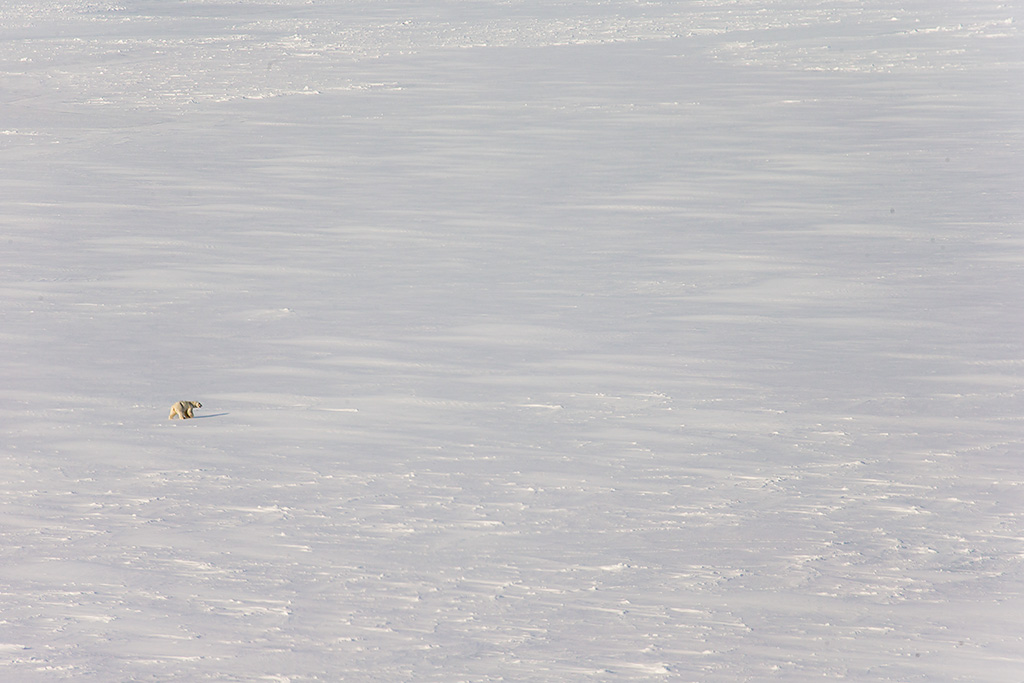
A polar bear is spotted from a helicopter’s aerial survey. Polar bears are well-camouflaged in this world of snow and ice, which is advantage if you are a predator and want to catch seals. Nonetheless, the research team was able to find 53 bears this season, and fitted 7 females with satellite collars during the cruise.



